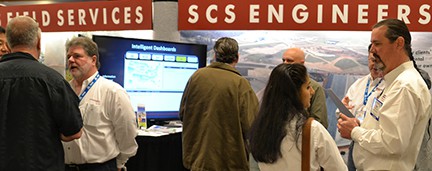


Statistics is the science of learning from data and using the results in many industries for various purposes. As environmental consultants, we use statistics primarily to help clients meet regulatory requirements because statistical analyses can provide valuable insights and guidance, potentially saving our clients’ money and time.
Various statistical methods can help streamline assessment and remediation concerning contaminated site cleanup, ultimately facilitating site closure. Statistical analysis can help to answer some important questions that arise throughout the life cycle of a project. The table below summarizes some common statistical questions, statistical methods, and data visualizations (statistical questions modified from ITRC, 2013*).

Statistics is one tool for solving client problems in combination with other methods. However, it is important to note that the output of a statistical analysis is only as good as the input, meaning that the collection of quality field samples and adherence to relevant standard operating procedures are crucial to the quality of statistical analysis.
In conclusion, while statistical analysis is a powerful tool for addressing client environmental issues, its effectiveness depends heavily on the accuracy of data collection and strict adherence to established protocols, ensuring reliable and meaningful results for our clients.
SCS has successfully implemented each of these methods on project sites. Future blogs will describe specific methodologies and processes with actual case studies useful for addressing the following,
Background Studies: after calculating the appropriate background level or establishing a background data set, that level or data set could support the removal of a particular contaminant from further consideration or serve as the remediation objective.
Groundwater trend analysis: to evaluate whether groundwater concentrations are increasing, decreasing, or stable/no trend, which could support the completion of long-term groundwater monitoring. This approach can also help estimate the time to attain cleanup goals.
Spatial Statistics: use several methods to evaluate spatial hot spots and outliers, groundwater plume stability, and groundwater concentration or elevation gradients, which can aid in evaluating areas of high concentrations requiring further evaluation.
*Interstate Technology & Regulatory Council (ITRC) Framework for Developing Quality ITRC Technical and Regulatory Guidance Documents, Revised December 2013
Additional Site Assessment and Remediation Resources:
John F. Hartwell, Ph.D., PE., CHMM, and Senior Consultant at SCS Engineers recently successfully defended his dissertation and earned his Ph.D. An abstract of Dr. Hartwell’s dissertation follows:

METHODOLOGY FOR ASSESSING MUNICIPAL SOLID WASTE USING A LARGE-DIAMETER BOREHOLE
LTC John F. Hartwell, Ph.D., P.E.
University of Nebraska, 2015
Municipal solid waste (MSW) landfills are permanent repositories of society’s non-hazardous wastes. Landfill facilities are becoming harder to site, resulting in increasing pressure to maximize the use of available airspace. Increasingly, this results in developing additional airspace by way of vertical expansion. This expansion imparts greater stress on the landfill mass and the containment infrastructure.
The engineer’s understanding of the geotechnical properties of MSW has been limited to sampling of relatively shallow test pits and reconstitution of disturbed MSW samples in the laboratory. Deeper assessment using small diameter borings is difficult and produces poor low volume samples for ex-situ testing. Some researchers have synthesized MSW with obvious limitations. Landfill failures have provided opportunities for back calculation of MSW properties including shear strength, but these estimates are based on limited understanding of unit weight and moisture content with depth.
The recent trend for the harvesting of methane produced by the anaerobic degradation of MSW has resulted in the need for nearly full-depth, large-diameter, landfill gas collection wells. Prior to completion, these boreholes provide excellent opportunities for directly observing and measuring the condition of MSW in its buried, variably degraded state at depths that are far greater than previously accessible.
The large diameter MSW gas well borehole assessment methodology presented in this paper is shown to be an efficient and valuable means for characterizing MSW. This means that the cost of the assessment is relatively low as the drilling costs are negligible and therefore limited to the cost of labor to sample and perform field observation and laboratory testing. The assessment methodology, which includes scaled full coverage photography and videography, allows precise analysis of a number of geotechnical properties such as wet and dry unit weight, moisture content, specific gravity, void ratio, % saturation of MSW and buried soil layers throughout the depth of the borehole. Further, MSW constituents and biologic degradation can be measured. The orientation / alignment of tensile reinforcement within the waste mass is readily observable. Zones of perched leachate and the effects of mechanical creep on borehole diameter can also be measured.
Contact John Hartwell or Contact SCS Engineers
Learn more about MSW Landfill Services from SCS.
SCS Engineers – highly ranked for environmental consulting – San Diego Business Journal

The San Diego Business Journal listed SCS Engineers as one of the top Environmental Consultants in the region. The listing was researched and compiled by Courtney Shamrell of SDBJ. Environmental services covered by the list include; site assessments, environmental sciences, NEPA/CEQA activities, environmental remediation, work for federal and local governments, work for commercial enterprises, and other environmental engineering projects.
Thank you to our clients and to our environmental professionals who put SCS sustainable environmental solutions to work.